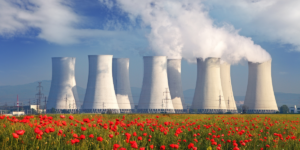Recycling has become a cornerstone of environmental consciousness, promoted as a simple,
effective way to reduce waste, conserve natural resources, and protect the planet. From
community programs to corporate sustainability initiatives, the recycling mantra is everywhere.
But as much as we’d like to believe in its positive impact, the reality of recycling can be far more
complicated than it appears.
Let’s dive into these questions and separate fact from fiction when it comes to recycling.
The Basics of Recycling: A Quick Overview
Recycling is the process of converting waste materials into reusable materials to prevent
unnecessary waste and conserve resources. Commonly recycled items include paper, glass,
plastics, and metals. These materials can be processed and transformed into new products,
thus reducing the need for raw materials. While it sounds like a win-win scenario for the
environment, the truth behind the process is more nuanced.
Do Your Items Really Get Recycled?
A recent CBS News Sunday Morning story states “About 48 million tons of plastic waste is
generated in the U.S. each year; only 5 to 6 percent of it is actually recycled, according to the
Department of Energy. The rest ends up in landfills or is
burned”. https://www.cbsnews.com/news/critics-call-out-plastics-industry-over-fraud-of-plastic-
recycling/
When you toss your plastic bottle into the blue bin or drop off a bag of aluminum cans, do they
truly get recycled? The answer isn’t as straightforward as you might think. While recycling
programs exist in many communities, not all materials are processed the way you expect.
Several factors can influence whether an item is actually recycled or sent to the landfill:
1. Contamination: One of the biggest barriers to recycling is contamination. If an item isn’t
properly cleaned or if non-recyclable items are mixed with recyclable ones, it can render
the whole batch unfit for processing. For example, food residue on a pizza box or a
greasy pizza box itself can ruin an entire batch of cardboard recycling.
2. Market Demand: The global market for recycled materials fluctuates. China, once the
largest importer of recyclable materials, has drastically reduced its intake of
contaminated recyclables, leaving many recyclables with no place to go. In some cases,
municipalities are forced to store, incinerate, or even send recyclable materials to
landfills if there’s no demand for them.
3. Economic Viability: Not all recycling programs are economically viable. For some
materials, the cost of collection, sorting, and processing outweighs the financial benefits
of recycling them. This has led some areas to halt the recycling of certain materials like
plastics and even some paper products.
The Benefits of Recycling
Despite the challenges, recycling does have clear environmental, economic, and social benefits:
1. Resource Conservation: Recycling reduces the need to extract new raw materials from
the Earth. For instance, recycling aluminum saves up to 95% of the energy required to
create new aluminum from bauxite ore. Similarly, recycling paper reduces the need for
cutting down trees and preserves forests and biodiversity.
2. Energy Savings: Recycled materials typically require less energy to process than raw
materials. This leads to a decrease in overall energy consumption and helps reduce
greenhouse gas emissions.
3. Reduction of Landfill Waste: Recycling helps divert waste from landfills, reducing the
environmental impact of waste disposal, such as methane emissions from decomposing
organic waste and the potential for groundwater contamination.
4. Job Creation: The recycling industry employs millions of people globally. From
collection and sorting to processing and manufacturing, recycling supports jobs that
might not exist in other sectors.
5. Environmental Benefits: On a broader scale, recycling helps decrease pollution in the
air, water, and soil by reducing the need for new mining, logging, and manufacturing
processes that often generate harmful byproducts.
The Problem with Recycling
While recycling is touted as a critical tool for sustainability, it faces several significant
challenges:
1. Inefficiency and Low Participation: Many recycling programs, particularly curbside
programs, are inefficient due to low participation rates and improper sorting of materials.
Studies suggest that Americans only recycle about 30% of their waste, which means that
a large portion of recyclable materials still ends up in landfills.
2. Contamination: As mentioned, contamination is a major issue for recyclables. Mixed
loads of materials, such as plastic bags (which get tangled in sorting machinery) or food
waste on packaging, can ruin entire shipments of recyclable materials, making the
process less efficient.
3. Over-reliance on Consumers: The responsibility of recycling often falls on the
consumer rather than industries or producers. However, not all products are designed
with recycling in mind, and consumers are often left with little guidance on how to
properly dispose of various items.
4. Limited Recycling Capabilities: Not all materials are recyclable. Some plastics, for
instance, can only be recycled once before they degrade and are no longer usable.
Moreover, many types of plastic are not accepted in curbside recycling programs due to
the costs and technical challenges of processing them.
5. Global Trade Problems: The global nature of recycling is under strain. With countries
imposing strict contamination limits and reducing their intake of foreign recyclables,
many U.S. cities have struggled to find viable markets for the materials they collect.
The Future of Recycling
Recycling is undoubtedly an important tool in the fight against waste, but it’s not a remedy for
environmental problems. As consumers, we can do our part by understanding the limitations
and complexities of the recycling process—by properly sorting materials, cleaning items before
recycling, and reducing our consumption of non-recyclable goods.
Recycling programs provide significant benefits, but they also face considerable obstacles.
Improvements in technology, better market demand for recycled materials, and increased public
education can help make recycling a more effective and sustainable practice. While recycling
alone cannot solve the climate crisis, it is one piece of the puzzle in creating a more sustainable
future.
Let’s discuss your sustainability efforts and goals. A thorough evaluation by Brilliant Source
Energy can help quantify your efforts and identify opportunities.






